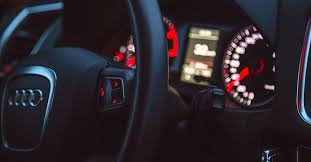Adaptive interior lights are a modern innovation in automotive lighting, offering customizable illumination that adapts to the driver’s preferences or environmental conditions. These lighting systems enhance the aesthetic and functional appeal of a vehicle’s cabin. However, like any complex system, adaptive interior lights can experience issues over time. Identifying these common problems and understanding how to resolve them can help vehicle owners maintain their lighting systems effectively, ensuring a consistent and high-quality experience.
Flickering or Inconsistent Lighting
One of the most common issues with adaptive interior lights is flickering or inconsistent lighting. This can occur when there is an issue with the power supply or wiring connections. Inconsistent voltage, damaged wires, or faulty connectors can cause the lights to flicker or fail to operate at full brightness. Resolving this issue typically involves checking the wiring and power supply connections. A mechanic will inspect the electrical components and ensure that the system is receiving the appropriate voltage. Replacing damaged wires or securing loose connections can eliminate flickering and restore proper light functionality.
Failure to Adjust or Respond to Settings
Another frequent issue with adaptive interior lights is the failure to adjust or respond to settings, such as changes in brightness or color temperature. Adaptive lighting systems often rely on sensors or a control unit to make adjustments based on factors like the vehicle’s speed, external light levels, or user input. When these systems fail to adjust as expected, the problem may lie in a malfunctioning sensor, faulty control unit, or software glitches. Technicians typically start by checking the sensors and control unit to ensure they are functioning correctly. Going for the Auto Repair in Logan, UT based service would be the right decision here.
Light Dimming or Overheating
Over time, adaptive interior lights may begin to dim or overheat, affecting the brightness and overall performance of the lighting system. Dimming can occur due to aging components, such as worn-out LEDs or a malfunctioning light control module. Overheating, on the other hand, is often caused by poor ventilation or a failure in the heat dissipation system. To resolve these issues, technicians will first examine the light sources, ensuring they are operating efficiently.
Sensor or Control Unit Issues
The adaptive nature of these lighting systems relies on sensors and control units to function correctly. If these components become misaligned or malfunction, the adaptive lights may not perform as intended. For example, a sensor that detects changes in ambient light might not trigger the desired response from the lighting system. To resolve sensor or control unit issues, the technician will recalibrate the sensors and check the control unit’s functionality. If the unit is malfunctioning, it may need to be replaced or repaired to restore proper operation of the adaptive lighting system.
Conclusion
Adaptive interior lights offer a unique and customizable lighting experience in vehicles, but they can experience problems such as flickering, failure to adjust, dimming, or overheating. Regular maintenance and prompt repairs are essential to resolving these issues and ensuring that the system operates as intended.

